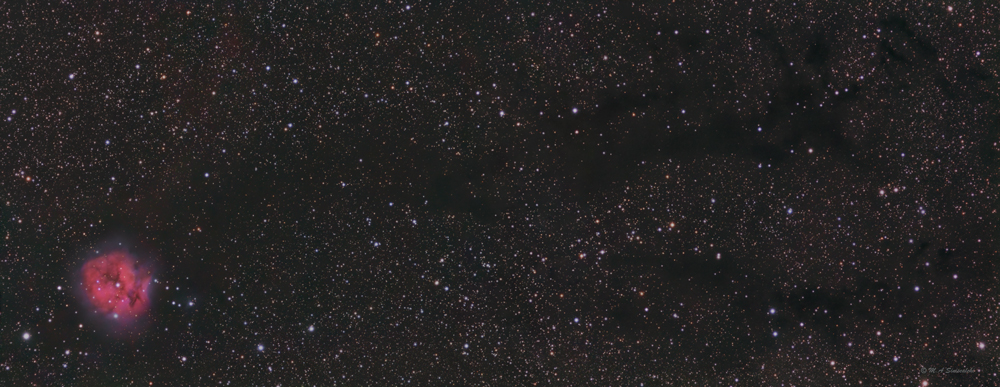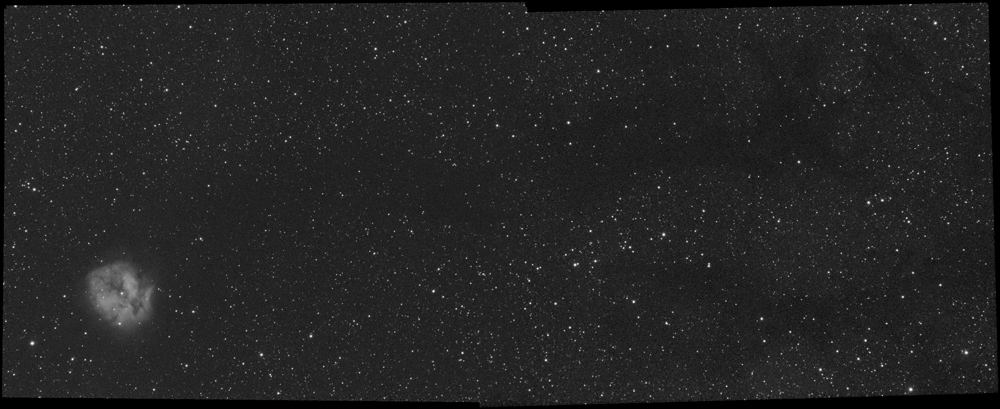© 2022 Michael A. Siniscalchi
IC 5146
Reflection/Emission Nebula in Cygnus
RA:21h 53m 23s Dec: +47 15' 60" Distance - ~2,779 ly Size 20'
Wikipedia-
IC 5146 (also Caldwell 19, Sh 2-125, Barnard 168, and the Cocoon Nebula) is a reflection/emission nebula and Caldwell object in the constellation Cygnus. The NGC description refers to IC 5146 as a cluster of 9.5 mag stars involved in a bright and dark nebula. The cluster is also known as Collinder 470. It shines at magnitude +10.0/+9.3/+7.2. Its celestial coordinates are RA 21h 53.5m , dec +47° 16'. It is located near the naked-eye star Pi Cygni, the open cluster NGC 7209 in Lacerta, and the bright open cluster
M39. The cluster is about 4,000 ly away, and the central star that lights it formed about 100,000 years ago; the nebula is about 12 arcmins across, which is equivalent to a span of 15 light years.
When viewing IC 5146, dark nebula Barnard 168 (B168) is an inseparable part of the experience, forming a dark lane that surrounds the cluster and projects westward forming the appearance of a trail behind the Cocoon.
IC 5146 is a stellar nursery where star-formation is ongoing. Observations by both the Spitzer Space Telescope and the Chandra X-ray Observatory have collectively identified hundreds of young stellar objects. Young stars are seen in both the emission nebula, where gas has been ionized by massive young stars, and in the infrared-dark molecular cloud that forms the "tail". The most-massive stars in the region is BD +46 3474, a star of class B1 that is an estimated 14±4 times the mass of the sun.
Click on image for full size.
IC 5146 position shown relative to our location (Sun) in the Milky Way Galaxy
Age: 426 million years
Galatic Longitude: 94.4
Galatic Latitude: -5.5
Distance from Galatic Plane:210 ly below the galatic plane
Above image and info provided by Our Galaxy 3D Atlas application and used with permission by
Otherwise
Initial stretch of the Hydrogen alpha (Ha) mosaic panel. Exposure time is 2 hours per panel.
This was used as the base layer.


